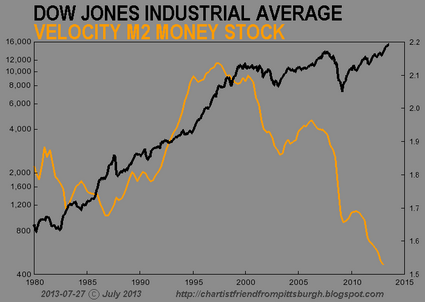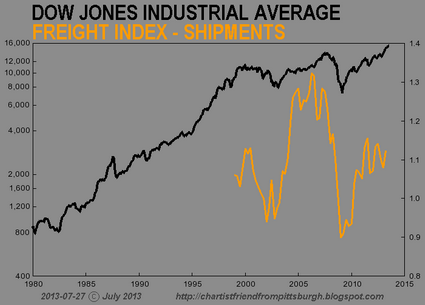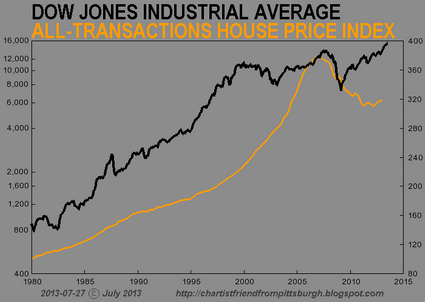Summary of a lecture by Professor Chris Rhodes to the Conway Hall Ethical Society, Conway Hall, Red Lion Square, London. 11.00 am, Sunday July 28th, 2013.
The world supply of crude oil isn’t going to run out any time soon, and we will be producing oil for decades to come. However, what we won’t be doing is producing crude oil – petroleum – at the present rate of around 30 billion barrels per year. For a global civilization that is based almost entirely on a plentiful supply of cheap, crude oil, this is going to present some considerable challenges. If we look over a 40 year period, from 1965 to 2005, we see that by the end of it, humanity was using two and a half times as much oil, twice as much coal and three times as much natural gas, as at the start, and overall, around three times as much energy: this for a population that had “only” doubled. Hence our individual average carbon footprint had increased substantially – not, of course, that this increase in the use of energy, and all else, was by any means equally distributed across the globe.
From the latest document that I can find – the B.P. Statistical Review – we see that the majority form of energy used by humans on earth is crude oil, accounting for 33% of our total, closely followed by coal at 30%: a figure that is rapidly catching up with oil, as coal is the principal and increasing source of energy in developing nations such as China and India. Natural gas follows in a close third place, at 24%; nuclear and hydroelectric power at 5-6% each; and the tiny fraction of our overall energy that comes from “renewables”, is just 1.6%. Thus, we are dependent on the fossil fuels for 87% of our energy. Now, such a comparison is almost misleading and naïve, because it tacitly presumes that if our oil supply becomes compromised, we can make a simple substitution for it using some other energy source.
However, this is not so readily done in practice, because oil is a particular and unique substance, having both a high energy content, and that it is readily refined into liquid fuels – effectively by distillation – to provide the petrol and diesel that runs practically all of the world’s transportation. Moreover, everything we depend upon - literally everything: food, materials, clothes, computers, mobile phones, pharmaceuticals etc. – for our daily existence is underpinned by a plentiful supply of cheap crude oil. So, the loss of this provision is going to have a profound, and shattering effect on human civilization.
In the “good old days”, e.g. the Humphrey Jones “Giant Gusher” drilled in Texas in 1922, it was necessary only to drill a hole in the ground to get oil. An oil well contains not only oil, but gas at high pressure, meaning that once the cap-rock that holds it all in place is broken, the oil is forced out in that familiar jet of black gold. The good old days indeed, because then it was necessary only to expend an amount of energy equal to that contained in one barrel of oil to recover a hundred barrels, which is like investing a pound and getting a return of a hundred pounds – a very good net profit. In 2013, the return is maybe twenty pounds or just three for extra-heavy oil, or for “oil” derived from tar sands, once it has been upgraded into liquid fuel.
Of greatest concern is how much oil is remaining. As noted, we currently use 30 billion barrels a year – 84 million barrels a day, or a thousand barrels every second. When it is trumpeted about some new and huge find of oil, e.g. the Tupi field off Brazil, thought to contain 8 billion barrels, in reality this is only enough to run the world for three months. Context should not be lost in these matters. The quality of the oil is also at issue. For example, much of the remaining oil is of the “heavy”, “sour” kind, meaning that it is not necessarily liquid at all, but bitumen, and contains relatively high levels of sulphur, necessitating complex and energy-intensive processing to get the sulphur out – which would otherwise be corrosive toward the steel used in the refinery – and to crack the heavier material into lighter fractions that can be used as fuel, or as feedstocks for industry.
So, it’s not just that we have got through much of our original bestowal of oil, but that what remains is of poorer quality – in other words, we have used-up most of the “good stuff”! Oil shale is not oil at all, but contains a material called “kerogen” which is a solid and needs to be heated to five hundred degrees Centigrade to break it down into a liquid form that in any way resembles what we normally think of as “oil”. So, when it is claimed that there are “three trillion barrels” of oil under America, really this is only to encourage voters and investors, because the actual Energy return on Energy Invested (EROEI) is so poor that there has been no serious commercial exploitation of oil shale to date, and probably there never will be.
Not only are we entirely dependent on crude oil for all our fuel and materials, but without cheap crude oil, and natural gas to make nitrogen fertilizers, we could grow no food. If we look at a field of soya beans being harvested in Brazil, we see a number of features. For one, those beans are not consumed at source, but are transported around Brazil and around the world. So, oil-derived fuels are necessary not only to run the tractors and combine harvesters, but the trucks, ships and planes to move the crop onto the world markets. In addition, we see the vast clouds of dust being thrown up behind the marching array of mighty machines – combine harvesters – which represents the loss of top-soil.
Even if we could solve all our energy problems, we are consuming the living and fragile portion of the earth’s surface that is our soil, and upon which we are utterly dependent to grow any food at all. We have “lost” around one third of our soil in the past half century - much of this through unsound and unsustainable agricultural practices - which does not bode well for the survival of a burgeoning human population. Another feature is that this land was once rain forest, which has been cleared to use the land for farming.
This is done either simply by setting fire to the forest, or by more exquisite means, such as taking a ship’s anchor chain, four hundred feet long - and if it is two inches in diameter, weighing five tonnes – then stringing it between two one hundred tonne tractors and simply driving over the terrain, so that the chain rips through everything that is there, tearing the trees out by their roots and destroying the structure of the soil in the process. The upshot is that the soil becomes unproductive within only a few years and so it is necessary to move on and do the same thing elsewhere.
In Britain we import about 40% of what we eat, and we use around 7 million tonnes of crude oil each year to fuel our food-chain. It can be said that we literally “eat oil”.
The concept of “Peak Oil” is due to Marion King Hubbert, a petroleum geologist working for the Shell Development Company in Texas, who predicted that oil production in America would peak in 1970. At that time, Texas was “awash” with oil – America being the world’s major oil-exporting nation then - and so no one took him seriously: but when in 1970, he was proved correct, Hubbert’s Peak entered the realm both of hard science and folklore. According to Hubbert, there is a 40 year lag between the year of peak discovery and that of peak production. If we apply this to the world situation, where global oil discovery peaked in 1965, we expect a global production in 2005. Indeed world production of oil has been on a flat line since 2005, and it is thought that we are at the production limit.
The price of oil has quadrupled in the past 10 years, reflecting the more strenuous efforts that are necessary to maintain production: deepwater drilling, fracking, tar sands, all of which have much lower energy returns than for conventional crude oil. Indeed, oil that is recovered from fracking costs about $105 a barrel to produce which until recently was more than it could be sold for. However, the price of oil is creeping up, and the industry is prepared to bear the loss for now, because it knows that the price of a barrel of oil will shortly rocket, and having cornered this “new” portion of the industry, will make big profits. Oil companies are not charities, after all. I emphasis the word “new” because fracking – properly called hydraulic fracturing – has been around since 1947: what is new is the combination of this technique with horizontal drilling, meaning that porous but impermeable rocks can be drilled-out laterally, then “fracked” to break them open thus releasing the oil or gas that they contain.
Fracking is a controversial matter, and there are grave concerns about groundwater contamination from the process. It is not only the fear that the chemicals that were originally present in the fracking fluid might migrate upward into the water table, but that other toxic materials, e.g. radon, that were confined safely within the natural prevailing geology, might be exhumed too. The Royal Society (U.K. equivalent of a national academy of sciences) has concluded that the procedure is safe, so long as it is strictly regulated, but how can this be guaranteed, when profits are the order of the day, and if the technology is to be employed across the world?
What too will become of the millions of gallons of contaminated water, injected under great pressure into the wells to fracture the rock, that remains? Will this be disposed of safely or simply left behind, potentially to leak into and contaminate the groundwater and the soil? This would be a tragic and cruel legacy for future generations.
Analyses made by both the International Energy Administration (IEA; effectively part of the U.S. Department of Energy) and its counterpart organisation, the Paris-based Energy Information Agency (EIA), concur that we will have lost around half our production of conventional crude oil by 2030. This is equivalent to four times the present output of Saudi Arabia, and it seems highly unlikely that this gap in supply can be filled from unconventional sources. Since we are entirely dependent on crude oil to fuel the world’s transportation, and looking at the amount of oil we are likely to be left with, we may conclude that it will be necessary to curb transportation by about 70% over the next 20 years.
This means the loss mainly of personalized transport and it is unfeasible that there will be 34 million electric cars in the U.K. (the current number of oil-fuelled cars) any time soon, and in reality, never. The only sensible means to move people around using electric power is by light rail and tramways, i.e. mass-transit systems.
If we can’t address the problem from the supply side we have to curb our demand. In the absence of cheap and widely accessible transport we will need to produce far more of our food and materials at the local level. Such a metamorphosis of human civilization from the global to the local, will be underpinned by building strong, resilient communities in which people share their skills and knowledge, to provide as much as possible at the local, grass-roots level. This is the underpinning philosophy of the growing network of Transition Towns. Frightening though all of this is, we may evolve into a happier and more fulfilling state of living than a perceived status quo, that in truth is all too rapidly running through our fingers.
The world supply of crude oil isn’t going to run out any time soon, and we will be producing oil for decades to come. However, what we won’t be doing is producing crude oil – petroleum – at the present rate of around 30 billion barrels per year. For a global civilization that is based almost entirely on a plentiful supply of cheap, crude oil, this is going to present some considerable challenges. If we look over a 40 year period, from 1965 to 2005, we see that by the end of it, humanity was using two and a half times as much oil, twice as much coal and three times as much natural gas, as at the start, and overall, around three times as much energy: this for a population that had “only” doubled. Hence our individual average carbon footprint had increased substantially – not, of course, that this increase in the use of energy, and all else, was by any means equally distributed across the globe.
From the latest document that I can find – the B.P. Statistical Review – we see that the majority form of energy used by humans on earth is crude oil, accounting for 33% of our total, closely followed by coal at 30%: a figure that is rapidly catching up with oil, as coal is the principal and increasing source of energy in developing nations such as China and India. Natural gas follows in a close third place, at 24%; nuclear and hydroelectric power at 5-6% each; and the tiny fraction of our overall energy that comes from “renewables”, is just 1.6%. Thus, we are dependent on the fossil fuels for 87% of our energy. Now, such a comparison is almost misleading and naïve, because it tacitly presumes that if our oil supply becomes compromised, we can make a simple substitution for it using some other energy source.
However, this is not so readily done in practice, because oil is a particular and unique substance, having both a high energy content, and that it is readily refined into liquid fuels – effectively by distillation – to provide the petrol and diesel that runs practically all of the world’s transportation. Moreover, everything we depend upon - literally everything: food, materials, clothes, computers, mobile phones, pharmaceuticals etc. – for our daily existence is underpinned by a plentiful supply of cheap crude oil. So, the loss of this provision is going to have a profound, and shattering effect on human civilization.
In the “good old days”, e.g. the Humphrey Jones “Giant Gusher” drilled in Texas in 1922, it was necessary only to drill a hole in the ground to get oil. An oil well contains not only oil, but gas at high pressure, meaning that once the cap-rock that holds it all in place is broken, the oil is forced out in that familiar jet of black gold. The good old days indeed, because then it was necessary only to expend an amount of energy equal to that contained in one barrel of oil to recover a hundred barrels, which is like investing a pound and getting a return of a hundred pounds – a very good net profit. In 2013, the return is maybe twenty pounds or just three for extra-heavy oil, or for “oil” derived from tar sands, once it has been upgraded into liquid fuel.
Of greatest concern is how much oil is remaining. As noted, we currently use 30 billion barrels a year – 84 million barrels a day, or a thousand barrels every second. When it is trumpeted about some new and huge find of oil, e.g. the Tupi field off Brazil, thought to contain 8 billion barrels, in reality this is only enough to run the world for three months. Context should not be lost in these matters. The quality of the oil is also at issue. For example, much of the remaining oil is of the “heavy”, “sour” kind, meaning that it is not necessarily liquid at all, but bitumen, and contains relatively high levels of sulphur, necessitating complex and energy-intensive processing to get the sulphur out – which would otherwise be corrosive toward the steel used in the refinery – and to crack the heavier material into lighter fractions that can be used as fuel, or as feedstocks for industry.
So, it’s not just that we have got through much of our original bestowal of oil, but that what remains is of poorer quality – in other words, we have used-up most of the “good stuff”! Oil shale is not oil at all, but contains a material called “kerogen” which is a solid and needs to be heated to five hundred degrees Centigrade to break it down into a liquid form that in any way resembles what we normally think of as “oil”. So, when it is claimed that there are “three trillion barrels” of oil under America, really this is only to encourage voters and investors, because the actual Energy return on Energy Invested (EROEI) is so poor that there has been no serious commercial exploitation of oil shale to date, and probably there never will be.
Not only are we entirely dependent on crude oil for all our fuel and materials, but without cheap crude oil, and natural gas to make nitrogen fertilizers, we could grow no food. If we look at a field of soya beans being harvested in Brazil, we see a number of features. For one, those beans are not consumed at source, but are transported around Brazil and around the world. So, oil-derived fuels are necessary not only to run the tractors and combine harvesters, but the trucks, ships and planes to move the crop onto the world markets. In addition, we see the vast clouds of dust being thrown up behind the marching array of mighty machines – combine harvesters – which represents the loss of top-soil.
Even if we could solve all our energy problems, we are consuming the living and fragile portion of the earth’s surface that is our soil, and upon which we are utterly dependent to grow any food at all. We have “lost” around one third of our soil in the past half century - much of this through unsound and unsustainable agricultural practices - which does not bode well for the survival of a burgeoning human population. Another feature is that this land was once rain forest, which has been cleared to use the land for farming.
This is done either simply by setting fire to the forest, or by more exquisite means, such as taking a ship’s anchor chain, four hundred feet long - and if it is two inches in diameter, weighing five tonnes – then stringing it between two one hundred tonne tractors and simply driving over the terrain, so that the chain rips through everything that is there, tearing the trees out by their roots and destroying the structure of the soil in the process. The upshot is that the soil becomes unproductive within only a few years and so it is necessary to move on and do the same thing elsewhere.
In Britain we import about 40% of what we eat, and we use around 7 million tonnes of crude oil each year to fuel our food-chain. It can be said that we literally “eat oil”.
The concept of “Peak Oil” is due to Marion King Hubbert, a petroleum geologist working for the Shell Development Company in Texas, who predicted that oil production in America would peak in 1970. At that time, Texas was “awash” with oil – America being the world’s major oil-exporting nation then - and so no one took him seriously: but when in 1970, he was proved correct, Hubbert’s Peak entered the realm both of hard science and folklore. According to Hubbert, there is a 40 year lag between the year of peak discovery and that of peak production. If we apply this to the world situation, where global oil discovery peaked in 1965, we expect a global production in 2005. Indeed world production of oil has been on a flat line since 2005, and it is thought that we are at the production limit.
The price of oil has quadrupled in the past 10 years, reflecting the more strenuous efforts that are necessary to maintain production: deepwater drilling, fracking, tar sands, all of which have much lower energy returns than for conventional crude oil. Indeed, oil that is recovered from fracking costs about $105 a barrel to produce which until recently was more than it could be sold for. However, the price of oil is creeping up, and the industry is prepared to bear the loss for now, because it knows that the price of a barrel of oil will shortly rocket, and having cornered this “new” portion of the industry, will make big profits. Oil companies are not charities, after all. I emphasis the word “new” because fracking – properly called hydraulic fracturing – has been around since 1947: what is new is the combination of this technique with horizontal drilling, meaning that porous but impermeable rocks can be drilled-out laterally, then “fracked” to break them open thus releasing the oil or gas that they contain.
Fracking is a controversial matter, and there are grave concerns about groundwater contamination from the process. It is not only the fear that the chemicals that were originally present in the fracking fluid might migrate upward into the water table, but that other toxic materials, e.g. radon, that were confined safely within the natural prevailing geology, might be exhumed too. The Royal Society (U.K. equivalent of a national academy of sciences) has concluded that the procedure is safe, so long as it is strictly regulated, but how can this be guaranteed, when profits are the order of the day, and if the technology is to be employed across the world?
What too will become of the millions of gallons of contaminated water, injected under great pressure into the wells to fracture the rock, that remains? Will this be disposed of safely or simply left behind, potentially to leak into and contaminate the groundwater and the soil? This would be a tragic and cruel legacy for future generations.
Analyses made by both the International Energy Administration (IEA; effectively part of the U.S. Department of Energy) and its counterpart organisation, the Paris-based Energy Information Agency (EIA), concur that we will have lost around half our production of conventional crude oil by 2030. This is equivalent to four times the present output of Saudi Arabia, and it seems highly unlikely that this gap in supply can be filled from unconventional sources. Since we are entirely dependent on crude oil to fuel the world’s transportation, and looking at the amount of oil we are likely to be left with, we may conclude that it will be necessary to curb transportation by about 70% over the next 20 years.
This means the loss mainly of personalized transport and it is unfeasible that there will be 34 million electric cars in the U.K. (the current number of oil-fuelled cars) any time soon, and in reality, never. The only sensible means to move people around using electric power is by light rail and tramways, i.e. mass-transit systems.
If we can’t address the problem from the supply side we have to curb our demand. In the absence of cheap and widely accessible transport we will need to produce far more of our food and materials at the local level. Such a metamorphosis of human civilization from the global to the local, will be underpinned by building strong, resilient communities in which people share their skills and knowledge, to provide as much as possible at the local, grass-roots level. This is the underpinning philosophy of the growing network of Transition Towns. Frightening though all of this is, we may evolve into a happier and more fulfilling state of living than a perceived status quo, that in truth is all too rapidly running through our fingers.
http://www.zerohedge.com/print/477016






















